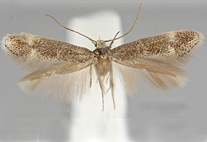Abstract
Two new Campylaimus species from Arroyo Pareja, Buenos Aires province and one new species and one new record of Campylaimus from Puerto San Julián, Chubut province are described. The three species are characterized by the shape of the copulatory apparatus of the male and the presence of precloacal papillae. Campylaimus bonariensis sp. nov. has slen-der and arcuate spicules, with well-developed cephalization at the proximal end, tubular gubernaculum and three preclo-acal papillae; Campylaimus arcuatus sp. nov. has curved spicules, with well-developed cephalization at the proximal end, gubernaculum with dorso-caudally directed apophysis and five precloacal papillae; Campylaimus patagonicus sp. nov. has slender and arcuate spicules without proximal cephalization, gubernaculum with dorso-caudally directed apophysis and two precloacal papillae. An emended diagnosis of the genus Campylaimus and an identification key to species based on male characters are given
the tail-color discrepancy. Only McAtee (1942) concluded that his description could be fully accurate as written, indicating a bird closely related to, but different from, a typical King Vulture. Paralleling Bartram’s description is an apparently independent account and painting of a vulture of uncertain geo-graphic origin by Eleazar Albin (1734). Details of Albin’s description, including tail color, are very similar to those of Bartram’s description. The only discrepancies are minor differences in color of softparts and tail that seem explicable as intraspecific variation. Available evidence suggests that Bartram knew nothing of Albin’s description, and if so, Albin’s bird provides quite persuasive support for the validity of Bartram’s bird. Equally important, none of the arguments offered historically against the validity of the Painted Vulture is persuasive when examined closely. Together, these and other fac-tors make a strong case for acceptance of Bartram’s Painted Vulture as a historic resident of northern Florida and likely other adjacent regions.
References
Boucher, G. & Helléouët, M.N. (1977) Nématodes des sables fins infralittoraux de la Pierre Noire (Manche occidentale).III. Araeolaimida et Monhysterida. Bulletin du Muséum National d´ Histoire Naturelle, 427, 85–122.
Cobb, N.A. (1920) One hundred new nemas (type species of 100 genera). Contributions to a Science of Nematology (Baltimore), 9, 217–343.
Deprez, T. (2006) NeMys. World Wide Web electronic publication. Available from http://www.nemys.ugent.be (accessed December 2006).
Ditlevsen, H. (1911) Danish free-living nematoden. Videnskabelige Meddelelser Dansk Naturhistorisk Forening, 63, 213–256.
Filipjev, I.N. (1918) Free-living marine nematodes of the Sevastopol area. Trudy Osoboi Zoologicheskoi Laboratorii i Sebastopol'skoi Biologicheskoi Stantsii (Imperatorskoi) Akademii Nauk, 2, 1–350.
Filipjev, I.N. (1929) Les Nématodes libres de la baie de la Neva et de l'extrémité orientale du Golfe de Finlande. Archiv für Hydrobiologie, 20, 637–699.
Gerlach, S.A. (1950) Die Diplopeltiden, eine Gruppe freilebender Nematoden. Kieler Meeresforsch, 7, 138–156.
Gerlach, S.A. (1956) Diagnosen neuer Nematoden aus der Kieler Bucht. Kieler Meeresforsch, 12, 85–109.
Gerlach, S.A. & Riemann, F. (1973) The bremerhaven checklist of aquatic nematodes. Veröffentlichungen des Instituts für Meeresforschung in Bremerhaven, Supplement 4, Heft 1, 1–401.
Gerlach, S.A. & Riemann, F. (1974) The bremerhaven checklist of Aquatic Nematodes. Veröffentlichungen des Instituts für Meeresforschung in Bremerhaven, Supplement 4, Heft 2, 405–736.
Huang, Y. & Zhang, N. (2006) Five new records of free-living marine nematodes in the Yellow Sea. Journal of Ocean University of China, 5, 29–34. http://dx.doi.org/10.1007/BF02919369
Muthumbi, A. & Vanreusel, A. (2006) Order Araeolaimida In. Abebe, E., Andrássy,I. & Traunspurger, W.(Eds). Fresh Water Nematodes: Ecology and Taxonomy. CABI Publishing, Wallingford, UK, pp.604–611. http://dx.doi.org/10.1079/9780851990095.0604
Sergeeva, N.G. (1981) New species of the genus Campylaimus (Nematoda, Araeolaimida) from the Black sea and Sivash Lake. Zoologichesky Zhurnal, 60, 1717–1719.
Tchesunov, A.V. (1978) New nematodes of the order Araeolaimida from the Caspian Sea. Zoologichesky Zhurnal, 57, 19–25.
Tchesunov A.V. & Miljutina, M.A. (2008). A new free-living nematode Intasia monohystera gen. n., sp. n. (Nematoda, Araeolaimida, Diplopeltidae) from the Barents Sea and the White Sea, with a key to genera of Diplopeltidae. Russian Journal of Nematology, 16, 33–48.
Thanh, N.V. & Gagarin, V.G. (2011) A new genus and two new species of marine free-living nematodes from the coastal waters of Southern Vietnam, Russian. Russian Journal of Marine Biology, 37, 366–370. http://dx.doi.org/10.1134/S1063074011050117
Timm, R.W. (1961) The marine nematodes of the Bay of Bengal. Proceedings Pakistan Academy of Sciences, 1, 1–84.
Vincx, M. & Gourbault, N. (1992) Six new species of the genus Diplopeltula (Nematoda: Diplopeltidae). Hydrobiologia, 230, 165–178. http://dx.doi.org/10.1007/BF00036563
Vitiello, P. (1974) Considérations sur la systématique des Nématodes Araeolaimida et description d' espèces nouvelles ou peu connus. Archives de Zoologie Experimentale et generale, 115, 651–669.
Warwick, R.M., Platt, H.M. & Somerfield, P.J. (1998) Free-living Marine Nematodes. Part III. Monhysterids. Field Studies Council, Shrewsbury, 290 pp.

